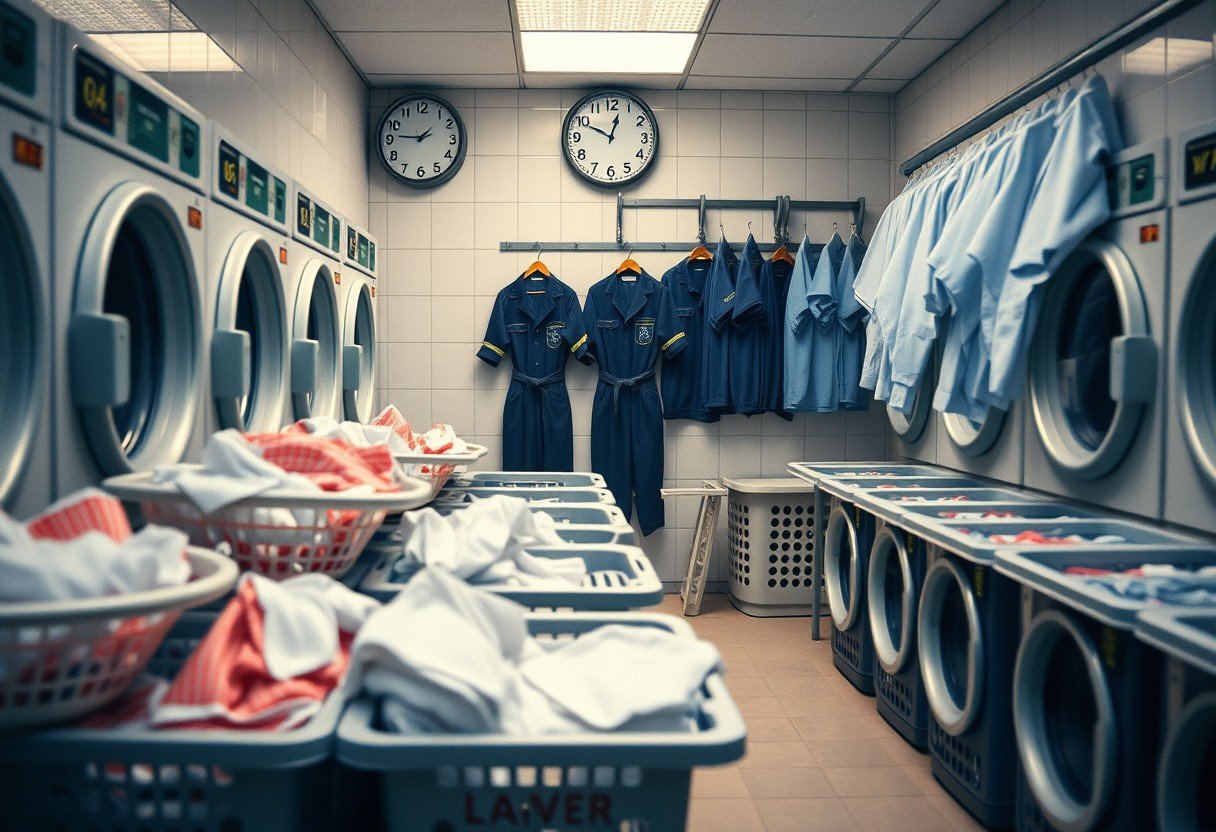This guide shows how many shifts you need to wash 10 loads, where time goes at home or a laundromat, how to plan wash and dry cycles, when to run off peak, who benefits from multi machine setups, and why a clear schedule saves money and stress.
Define Your Goal And Constraints
Start with a clear target. You need 10 finished loads washed and dried without wrecking your week.
List your limits such as number of machines, open hours, and noise rules in your building. Add commute time if you use a laundromat.
When you write constraints first, your laundry schedule becomes simple math rather than guesswork.
Note any hard deadlines like uniforms needed by Monday or kid sports gear due by morning.
Know Your Washer And Dryer Capacity
Washer capacity is often listed in cubic feet. Many homes use 3 to 4.5 cubic feet, and larger tubs reach about 5 cubic feet.
Older top loaders can be smaller and use more water per load, while high efficiency front loaders clean more with less water.
A right sized load cleans better and cuts rewash, which reduces the number of shifts you need to hit 10 loads.
Dryers vary too. A full washer load can take 45 to 60 minutes to dry, and heavy items like towels may need more time.
Calculate Cycle Time And Total Hours
Most normal wash cycles take 45 to 60 minutes. Quick cycles can be 20 to 30 minutes for lightly soiled items.
A typical dry cycle takes 45 to 60 minutes. Plan extra time for towels, bedding, and hoodies.
If each wash is 60 minutes and each dry is 60 minutes, one machine needs about 20 machine hours to finish 10 loads.
Stack time by overlapping. While Load 1 dries, start washing Load 2. This overlap is the key to finishing in fewer shifts.
Plan Shifts With A Simple Schedule Table
Use this example to estimate the number of shifts to wash 10 loads of laundry with overlap between wash and dry.
Adjust the numbers to your machine speeds and your available hours per shift.
| Setup | Loads At Once | Avg Time Per Load | Loads Per 4 Hour Shift | Shifts Needed For 10 Loads |
|---|---|---|---|---|
| One Washer One Dryer Home | 1 wash 1 dry overlapped | Wash 60 min Dry 60 min | 4 to 5 | 2 to 3 |
| Two Washers One Dryer Home | 2 wash 1 dry queued | Wash 45 min Dry 60 min | 5 to 6 | 2 |
| Laundromat Four Washers Four Dryers | 4 wash 4 dry parallel | Wash 30 min Dry 45 min | 10 | 1 |
Parallel machines can cut total shifts dramatically, which is why a single focused laundromat visit often beats many home shifts.
Fit Laundry Around Work Hours
Map your work shifts and commute, then mark open blocks of 2 to 4 hours for laundry.
Evenings and weekends are peak times, so try early morning or late night if your building rules allow it.
Off peak laundry hours reduce wait time, speed up turnover, and can lower energy costs where time of use rates apply.
Batch similar fabrics together so you can use the same settings and avoid fiddling with controls between loads.
Speed Up With Smart Workflow Steps
Follow these short steps to finish 10 loads faster without cutting cleaning quality.
- Pre sort into lights, darks, towels, and delicates so each load can go straight in with the right settings.
- Overlap every cycle by moving the washed load to the dryer the moment the washer ends, then start the next wash.
- Stage folding space near the dryer so clean items are folded right away and do not re wrinkle.
Small workflow wins save minutes per load, which adds up to hours saved across 10 loads.
If air drying, hang items while the next wash runs to keep momentum.
Manage Costs And Resources
Know your local costs when planning how many shifts to wash 10 loads of laundry.
Home wash often uses about 13 to 20 gallons per load for high efficiency washers and more for older models. Dryers may use 2 to 4 kilowatt hours per load.
- Typical laundromat wash price is about 2 to 4 dollars per load and dry is about 1 to 3 dollars per cycle.
- At home, total energy and water can run about 30 cents to 1 dollar per load based on local rates.
- Use full loads and correct spin speed to cut dry time and cost.
Stock enough detergent and stain remover before you start so a simple shortage does not force an extra shift.
Track Progress And Adjust
Keep a simple tally of loads washed, dried, folded, and put away. A whiteboard or a phone note works well.
Note which loads took longest and why such as heavy towels or slow dry. Fix the bottleneck on the next shift.
A short review after each shift improves the next one and lowers the total time to finish all 10 loads.
When life changes your plan, move non urgent loads to the next window and protect sleep and work time.
FAQ
How Many Shifts Do I Need To Wash 10 Loads With One Washer And Dryer?
With overlap, most people finish in 2 to 3 four hour shifts. Plan about 20 machine hours total split between wash and dry.
What Is The Fastest Way To Finish 10 Loads In One Day?
Use multiple machines at a laundromat, pre sort at home, and run wash and dry in parallel. Many finish in one focused session of 2 to 3 hours.
How Long Does One Load Take From Start To Finish?
Normal wash is 45 to 60 minutes and dry is 45 to 60 minutes. Overlap the next wash during dry to cut clock time per load.
How Can I Cut Drying Time Safely?
Use higher spin speed, clean the lint filter, and separate heavy towels from light fabrics. Dry similar weights together for even results.
Is Air Drying A Good Option For 10 Loads?
Yes if you have space and airflow. Hang delicates and athletic wear, and keep towels in the dryer to avoid long air dry times.
What Size Loads Should I Run To Avoid Rewash?
Fill the drum about two thirds so clothes can tumble. A balanced load cleans better and protects fabric quality.









Leave a Comment